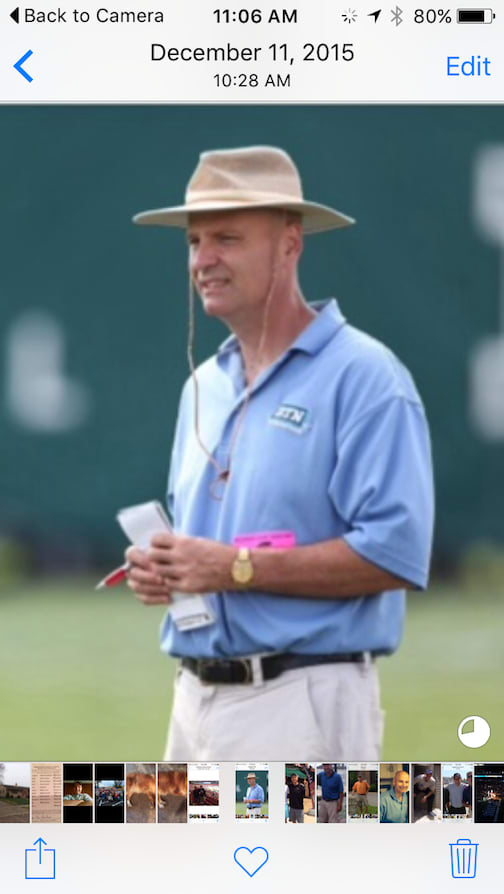
MORE TIME WARPS: Sept. 5, 2004: Purdue pummels Syracuse, 51-0 | Sept. 12, 1992: Purdue stuns Cal, 41-14 | Sept. 19, 1998: Purdue stymies UCF and Culpepper, 35-7
As we wait for Big Ten football to begin, GoldandBlack.com has been looking back at big Purdue victories on dates the Boilermakers were slated to play on their original 2020 schedule.
Today—September 26—Purdue was supposed to play its final non-conference game of the season: at Boston College.
With Purdue’s first-ever trip to Chestnut Hill, Mass., scrubbed, let’s look back on the Boilermakers’ biggest win ever on September 26.
September 26, 1981
Purdue 15, No. 13 Notre Dame 14
The set up: Purdue was on a roll as it entered Jim Young’s fifth season in 1981.
The no-nonsense Boilermaker boss arrived from Arizona and had transformed the Purdue program into one of the Big Ten’s best. How good had Purdue become under Young? It had gone to bowls each of the three previous seasons—and won them all from 1978-80: Peach, Blue Bonnet and Liberty. And in those three previous seasons, Purdue went 20-3-1 in Big Ten play with second-place finishes in 1979 and 1980. The 1979 squad is the only one in school history to win 10 games.
Impressive.
But questions loomed in 1981 with All-American quarterback Mark Herrmann and myriad other star Boilermakers like center Pete Quinn, tight end Dave Young, defensive end Calvin Clark and linebacker James Looney gone. Could Young keep the momentum?
Purdue opened 1981 with a rousing 27-19 home victory vs. John Elway and No. 19 Stanford. But that was followed by a 16-13 pratfall at Minnesota. Next up: No. 13 Notre Dame and coach Gerry Faust were coming to Ross-Ade Stadium. This was a chance for Purdue to get on track and show life without Herrmann and Co., would be OK.
What happened: Ross-Ade Stadium has seen few crazier endings. And the 70,007 fans shoe-horned into the stadium on this day—the third-largest crowd in Ross-Ade history—never will forget it.
Notre Dame looked to be in good shape for the win after Irish running back Phil Carter raced 30 yards for a TD to give ND a 14-7 lead with 2:57 left in the game. Game over, right? Wrong.
That’s when Campbell and Purdue went to work in what had been a slugfest game up to that point vs. a ND defense led by star LB Bob Crable.
The Hershey, Pa., native marched the Boilermakers 80 yards in 12 plays to paydirt, hitting big passes along the way to running back Eric Jordan (28 yards) and a scrambling completion to wideout Steve Bryant (42 yards) that got Purdue to the Notre Dame 1-yard line.
That’s when things got interesting … and very tense.
On first down, the Boilermakers saw tailback Wally Jones thrown for a six-yard loss followed by two Campbell passes that fell incomplete. That set up a do-or-die fourth down for Purdue.
Would Purdue deliver in this do-or-die situation?
Campbell delivered, hitting Bryant in the corner of the end zone for a TD. Kick the PAT and tie the game? Or go for the win? Purdue opted to go for the win.
The gamble paid off, as Campbell hit Bryant—again—this time in the other corner of the end zone.
The defense snuffed out ND’s last gasp at a game-winning field goal when Tim Seneff picked off a pass from Irish QB Tim Koegel. That set off pandemonium, as students rushed the field with six seconds hanging on the clock.
Purdue 15, Notre Dame 14.
Story continues below photo
Why it mattered: The win gave the Boilermakers confidence as they looked to advance to a bowl for a fourth season in a row. At 2-1, things looks promising for Purdue as it prepared to begin Big Ten play the next week at Wisconsin.
The 6-0, 185-pound Campbell showed he was a worthy heir to the Purdue QB throne, throwing for 246 yards on 11-of-24 passing. Campbell would be a three-year starter and throw for 7,636 yards and 45 TDs, both still sixth most in school history. Campbell was a seventh-round choice of the Steelers in 1984 and later played for the Falcons, lasting six seasons in the NFL and making 13 starts.
The aftermath: The heart-stopping win vs. ND proved to be the highlight of an otherwise disappointing season.
“This was the most enjoyable win for me, for the team, I’ve ever had” said Young. “I told the kids it was a great team victory. The effort was outstanding. They played with great determination even in the first half when we couldn’t seem to get going.”
The Boilermakers opened the season with a 5-2 record, fueling hopes around campus for another bowl trip. But, Purdue collapsed down the stretch, losing its last four games to finish 5-6 overall and 3-6 in the Big Ten. The 1981 season was a tale of “what could have been.”
The ’81 campaign also proved to be the final one for the then 46-year-old Young, who stepped down to take a role within the Purdue athletic department. But Young—who went 38-19-1 overall and 26-14-1 in the Big Ten—left town after one year of office work in Mackey Arena, becoming the head coach at Army. He enjoyed a prosperous eight-year run at West Point where he went 51-39-1 with three bowls.
The 5-6 mark in 1981 set in motion a string of 15 losing records in 16 seasons for the Boilermaker program with the lone winning season in that time coming in 1984.
Membership Info: Sign up for GoldandBlack.com now | Why join? | Questions?
Follow GoldandBlack.com: Twitter | Facebook | YouTube
More: Gold and Black Illustrated/Gold and Black Express | Subscribe to our podcast
Copyright, Boilers, Inc. 2020. All Rights Reserved. Reproducing or using editorial or graphical content, in whole or in part, without permission, is strictly prohibited.
